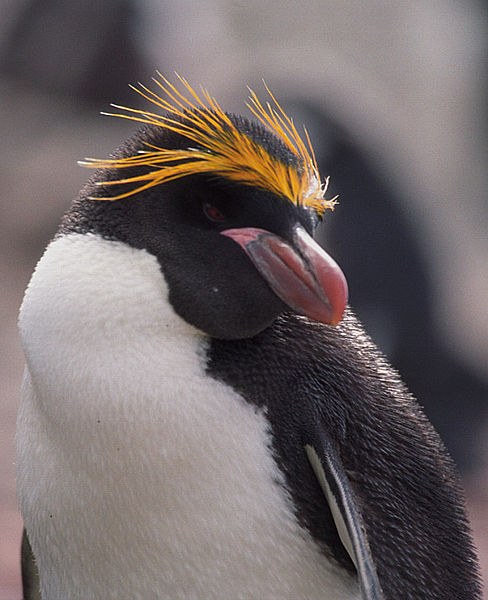
Penguins Feel the Heat
Penguin species exist in delicate balance within their ecosystems and climate change can disrupt their lives in complicated ways.
by Allyson Zahm, development manager for the New Mexico BioPark Society
April 4, 2018 - Penguins inhabit some of the harshest climates on Earth. For Subantarctic penguins, their range is home to fewer humans than nearly any other place on the planet, but it is one of the regions most heavily impacted by human-caused climate change.
Later this year, the ABQ BioPark will become home to three penguin species: king, gentoo and macaroni. These Subantarctic birds inhabit the frigid Southern Ocean. They nest on tiny islands circling Antarctica and forage in waters from the tips of South America, Africa and Australia to the vast Antarctic coast. Each species exists in delicate balance within their ecosystem and climate change can disrupt their lives in complicated ways.
Macaroni penguins, noted for their colorful tuft of yellow feathers, are the most common species of penguin. There are currently 6.3 million breeding pairs, yet their numbers have rapidly declined by 30 percent in the last 20 years. Climate change has most dramatically reduced the macaroni penguins' food source. Macaroni penguins feed mostly on krill. As juveniles, these shrimp-like crustaceans feed on algae that grow underneath sea ice. As ocean temperatures warm and sea ice disappears, krill numbers plummet. Some areas in the Southern Ocean have lost 80 percent of krill populations. Without this important food source, it is more difficult for macaroni penguins to feed themselves and their chicks.
King penguins are the second largest species of penguin and the deepest divers of all. Their populations remain stable, but climate change poses a multi-generational threat to the northernmost populations. During the breeding season, adults take turns incubating the egg and caring for the young chick while the other parent heads to sea to feed. Kings often feed on lanternfish in the highly productive Antarctic Polar Front (APF). Here, cold waters from the Antarctic meet warmer waters from the Subantarctic, and the upwelling of currents provides for vast numbers of plankton and crustaceans, and the fish that eat them. As ocean temperatures warm, the APF shifts southward. King penguins from northern colonies must travel further from their nesting beaches to feed. This journey can exhaust the adults. They may return to their home beach with less food for their chick, decreasing the chances for the chick's survival through the harsh winter months.
Gentoos, with their white "eyebrows" and brightly colored beaks and feet, may stand the best chance among the three ABQ BioPark penguin species. Their generalist diet of crustaceans, fish and squid allows them to capitalize on local food availability. Gentoos also do not show the extreme loyalty to nesting sites as some other penguins. On the Antarctic Peninsula, their population is increasing as they move into nesting areas vacated by Adélie penguins. With less than one million breeding pairs, gentoos are still on thin ice and remain vulnerable to other climate effects such as sea level rise, ocean acidification and changes to local weather patterns.
The Subantarctic and Antarctic regions still contain many mysteries, as do the lives of the penguins that inhabit them. As the body of climate science knowledge increases, we will know more about the potential for penguins to survive and thrive.
Although Albuquerque is 8,000 miles from wild penguins, our city can still impact their populations. By taking community-wide steps to reduce our carbon footprint, we can ensure the long term survival of these amazing birds. However, there are greater threats to penguins than climate change. Industrial fishing practices and pollution create immediate danger. To help penguins, please consider eating only sustainably sourced seafood and seafood-based products, such as omega-3 supplements. Reductions in overall waste, especially single-use plastics, can also dramatically improve the penguins' chances of survival.
